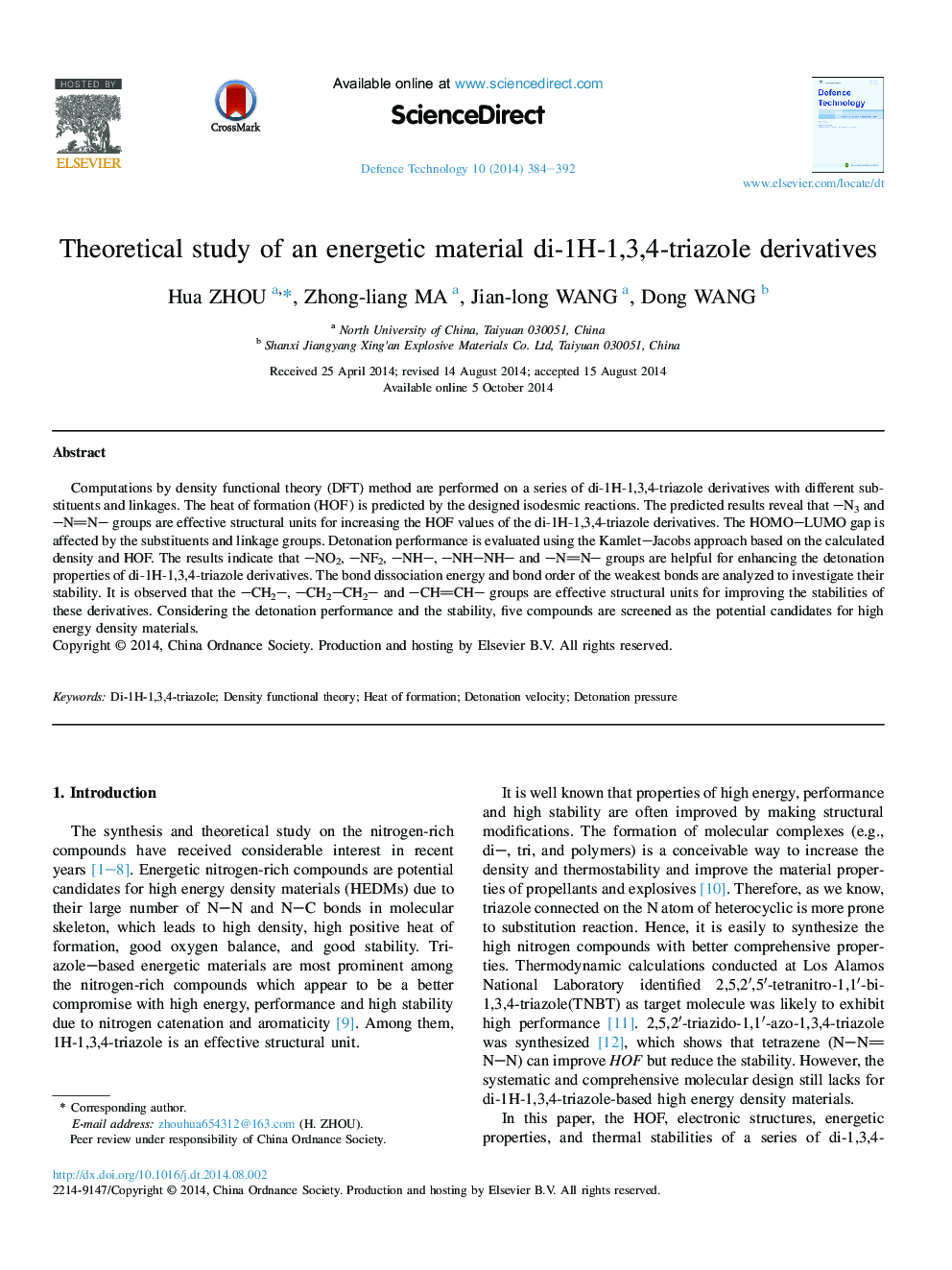| Article ID | Journal | Published Year | Pages | File Type |
|---|---|---|---|---|
| 763400 | Defence Technology | 2014 | 9 Pages |
Computations by density functional theory (DFT) method are performed on a series of di-1H-1,3,4-triazole derivatives with different substituents and linkages. The heat of formation (HOF) is predicted by the designed isodesmic reactions. The predicted results reveal that –N3 and –NN– groups are effective structural units for increasing the HOF values of the di-1H-1,3,4-triazole derivatives. The HOMO–LUMO gap is affected by the substituents and linkage groups. Detonation performance is evaluated using the Kamlet–Jacobs approach based on the calculated density and HOF. The results indicate that –NO2, –NF2, –NH–, –NH–NH– and –NN– groups are helpful for enhancing the detonation properties of di-1H-1,3,4-triazole derivatives. The bond dissociation energy and bond order of the weakest bonds are analyzed to investigate their stability. It is observed that the –CH2–, –CH2–CH2– and –CHCH– groups are effective structural units for improving the stabilities of these derivatives. Considering the detonation performance and the stability, five compounds are screened as the potential candidates for high energy density materials.
